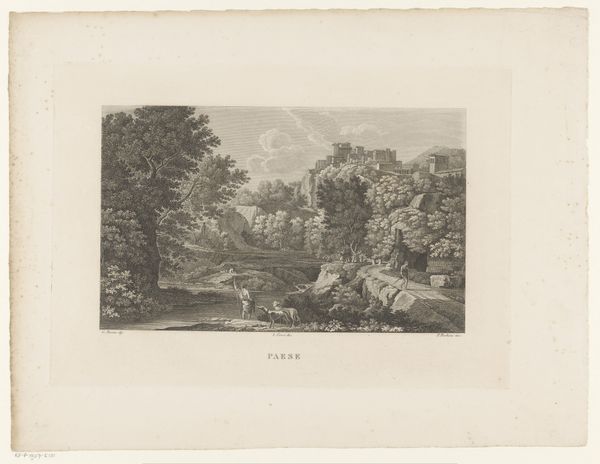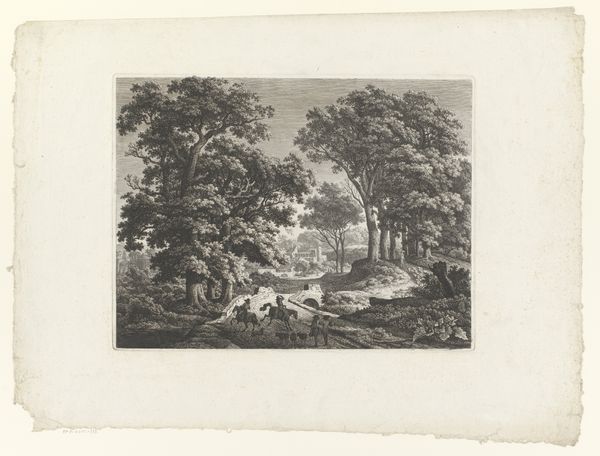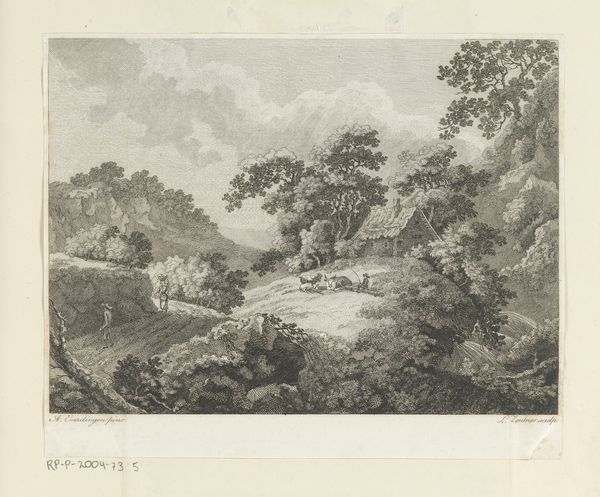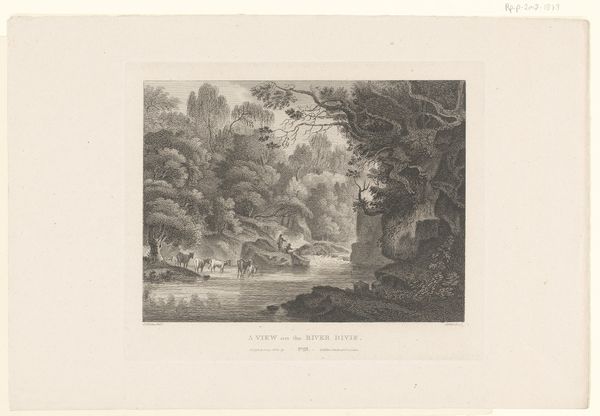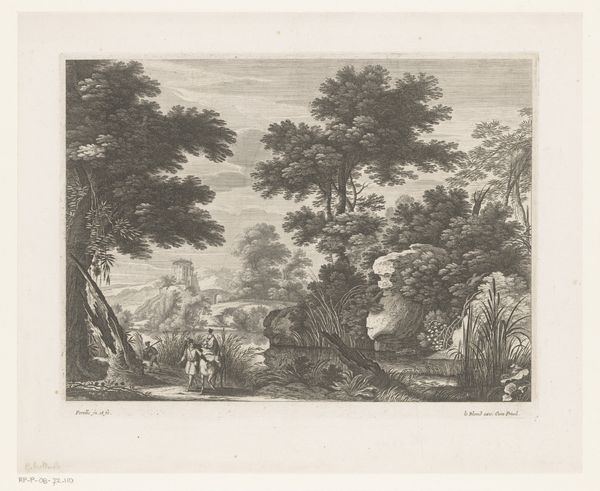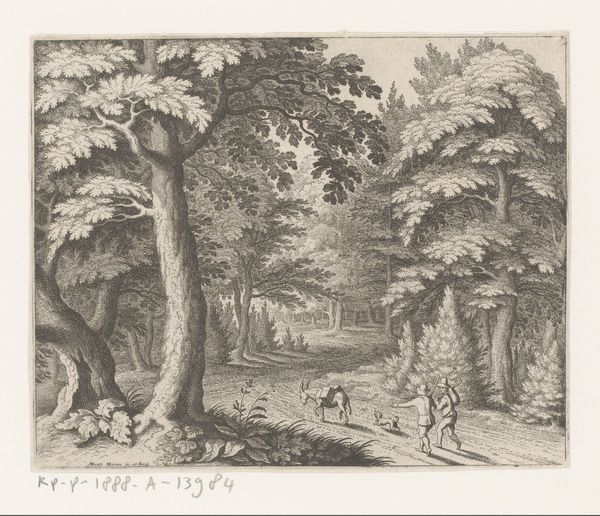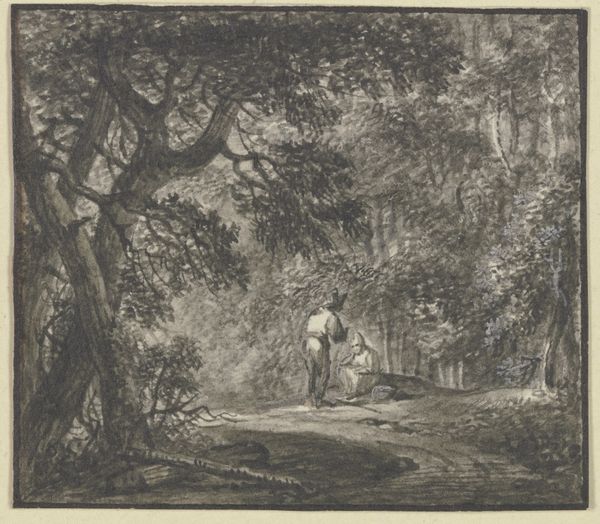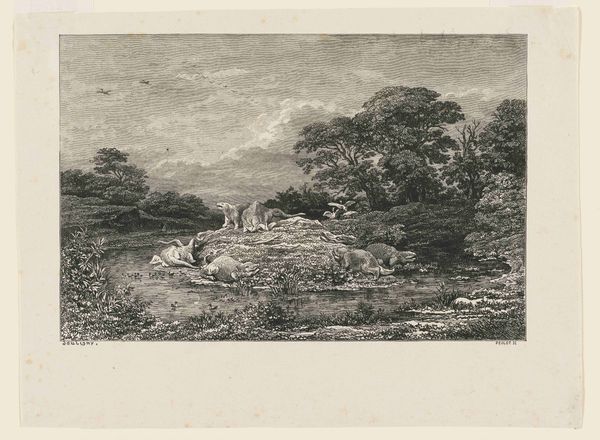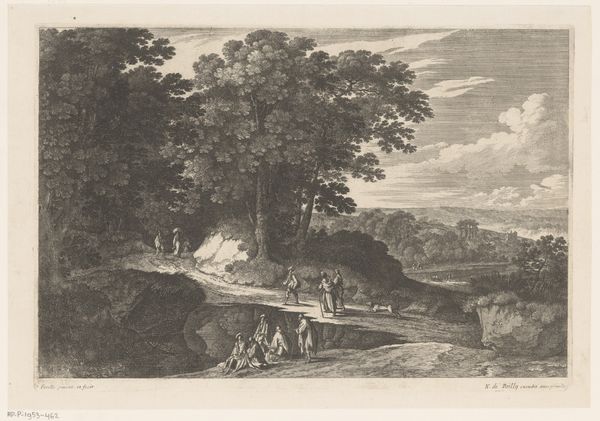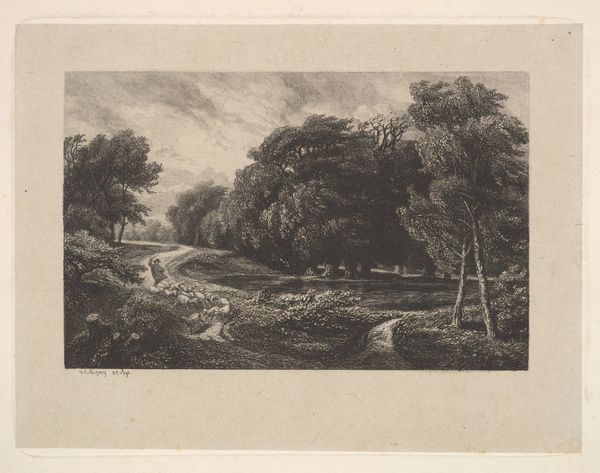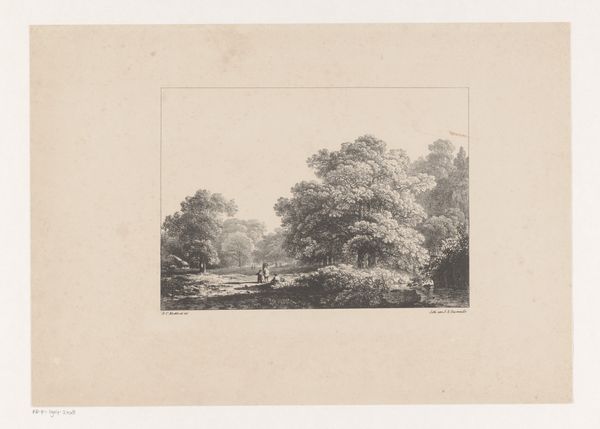
Dimensions: height 460 mm, width 581 mm
Copyright: Rijks Museum: Open Domain
Editor: So this is "Landscape with Two Monks by a Pool," a print made around 1777-1778. The artist is William Woollett. I'm really struck by how the artist uses all these dark and light contrasts to create almost a serene but slightly unsettling mood. What do you see in this piece? Curator: Immediately, the careful modulation of light and shadow presents itself. Note how the engraver, Woollett, uses varying densities of lines to simulate texture and depth. Do you observe the structure of the composition itself? Editor: I see a foreground, a middle ground with the pool, and then the trees fading into the background. It creates depth. And, the contrast between the dark trees on the right and the lighter sky pulls my eye around the piece. Curator: Precisely. Consider then how these compositional choices generate meaning. The light doesn't just illuminate, but guides the eye through stages, creating movement. Think of it as a visual syntax—dark versus light. Are those tonal variations, gradations effectively communicating a sentiment? Editor: So, the visual language creates this contemplative feeling? Curator: Indeed, through formal elements – the rhythmic distribution of light and shadow, the strategic arrangement of forms - an interpretation is crafted. Ask yourself what sort of relationship exists, in terms of shapes and lines, among objects or even people portrayed. Editor: It’s less about the 'what' and more about the 'how' the story's told visually. I was caught up in the surface-level mood before, but looking at it this way really clarifies how intention and careful choices construct the meaning, beyond the scene. Curator: Exactly. We decode the underlying structure and principles that shape aesthetic expression. Editor: Thanks. It’s really helpful to think about art in terms of its formal vocabulary.
Comments
No comments
Be the first to comment and join the conversation on the ultimate creative platform.
